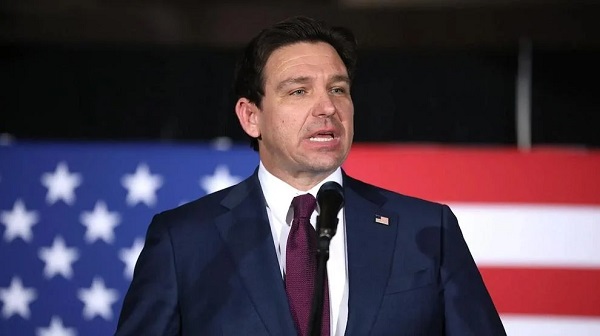Business
“Red Deer Revitalization Society” urges city to move homeless population away from downtown

This letter submitted by the Red Deer Revitalization Society
The Red Deer Revitalization Society is a group of approximately 40 concerned Red Deer business people.
A few years ago, a collection of concerned members of the Downtown Red Deer Business Community came together after the drug-addicted and homeless population were crippling their operations. These meetings took place concurrently with the City and Provincial initiatives to establish safe injection sites, permanent shelters, and other similar institutions. The volume of people in Red Deer who require assistance makes it obvious that there is a need for these services. The problem however is with their location. We write this to help motivate the relocation of the permanent shelter from the proposed 4934 54 th Ave site.
We are of the view that this proposed site will have two disastrous consequences. First, an increase in residential property tax rates. Second, the slaying of the City’s Capstone Development. A recent history of the Downtown shows that the business community and the homeless and drug-addicted community cannot peacefully coexist. This is – and has been – an underappreciated concern that affects everyone in the City of Red Deer. Over the last 15 years, Downtown Red Deer has witnessed a mass exodus of businesses. The once thriving Downtown core has become repulsive. In speaking with colleagues who have vacated the Downtown, their motivation is always taxes and vagrancy. Who can
blame them? It is difficult to attract enough customers to cover the tax bill (and other costs) when their front door is littered with drug paraphernalia and loiterers. The trend shows that a concentration of social services forsakes the area where they are located and thus surrounding businesses will take their investments elsewhere. This exclusion of business is dangerous for all of us.
Most people do not appreciate how the City makes ends meet. We all know that taxes must be collected – but how does the City determine which property owner pays what? The owners of all properties, whether commercial or residential, pay tax at an amount that is determined using various formulae which all boil down to the property’s true value. Historically, the commercial properties in Downtown Red Deer were valuable enough and producing enough revenue that they bore the brunt of the taxes. But what happens now? The exodus of business replaced with social chaos renders the Downtown Properties valueless. If the owners of these properties cannot be asked to maintain the City’s reserves, the City will have no choice but to look elsewhere. Unfortunately, residential owners will have to see their property taxes increase dramatically for the City to run. The proposed permanent shelter location is yet another mainstay for drug use and vagrancy in a downtown that is nearly dead. This will likely be the last nail in Downtown’s coffin and a direct cause of increased residential property taxes.
Another underappreciated concern is the viability of the City’s Capstone Development. The perpetual bare piece of prime real estate is the City’s crown jewel. It presents a unique opportunity to rejuvenate the Downtown and neglected Red Deer Riverfront (another letter to the editor is required to discuss the City’s squandering of opportunity in the Capstone area over the past 25 years). The proposed permanent shelter is in the shadow of the Capstone Development – where the City has invested a tremendous amount of money. In fact, some say that the City has already invested upwards of $42 Million in the Capstone Development, which is being branded as a business and family-driven part of
town. If that’s the goal, how could it possibly make sense to put a permanent shelter right beside it? We appreciate that services like homeless shelters and safe injection sites are unfavourable, and people generally have the “not in my back yard sentiment”. However, if you sit back and allow City Council to locate the shelter at 4934 54 th Ave., you will see Capstone remain undeveloped, you will continue to see the mass exodus of businesses from downtown Red Deer and you will see a significant increase in your residential property taxes.
How can you ensure that your residential property taxes decrease instead of increase? Contact City Council and your elected MLA’s and tell them that you disapprove of 4934 54 th Ave., and any other downtown location, being chosen for the permanent shelter. Time is of the essence.
Sincerely,
Red Deer Revitalization Society
Business
COP30 finally admits what resource workers already knew: prosperity and lower emissions must go hand in hand

From Resource Works
What a difference a few weeks make
Finally, the Conference of the Parties to the UN climate convention (COP30) adopted a pragmatic tone that will appeal to the working class. Too bad it took thirty meetings. Pragmatism produces results, not missed targets.
We should not have been surprised. Influential figures like Bill Gates and Canadian-Venezuelan analyst Quico Toro, who have long argued that efforts to reduce CO₂ should focus more on technology and prosperity, and less on energy consumption and declining growth, have gained ground.
In the World Energy Outlook 2025, prepared by the International Energy Agency for COP30, you can see that many of the views held by the people above had already gone mainstream before the conference started.
The World Energy Outlook 2025 lays out three scenarios: Current Policies (CPS), Stated Policies (STEPS), and Net Zero Emissions by 2050 (NZE). In WEO 2025, all three scenarios reflect longer timelines for the decline of fossil fuels than in earlier editions, and the NZE pathway explicitly states that major technological breakthroughs will be required.
Unfortunately, many potential technologies are adamantly opposed by the loudest groups within the Climate Change Movement because they are not perfect. Even some continue to oppose nuclear power, one of the few proven sources of large-scale, zero-carbon, firm electricity.
Another noteworthy standout in WEO 2025 was the strong recognition that energy security, costs, and supply chains are now the primary considerations in determining each country’s energy mix.
What all this means is we are breaking away from emotionally charged, fear-based policies and rhetoric and moving toward a practical “let’s do things better” approach.
For 30 years, the radical leadership of the environmental movement has focused on what we should stop doing and on sacrificing prosperity. Essentially, what has been going on is an attack on working people in the industrialized and developing world.
Today, workers in the developed world are so anxious that many are losing faith in democratic institutions. Meanwhile, people in the emerging and developing world see light at the end of the tunnel and are determined to industrialize.
Clearly, it is time to merge the fight to lower CO₂ emissions with prosperity. “Let’s do things better” captures the history of human progress and resonates with working people today.
What does it take for longer, healthier, safer, and more sustainable lives? It takes the pragmatism of workers. They spend their lives striving to improve workplace safety, to develop tools that enable them to perform tasks more effectively with less physical effort, to earn higher pay, to produce more food with less land, and to preserve their opportunity to continue working.
Resource workers have felt under attack and are humiliated when celebrities fly in on a helicopter to denigrate their work and make references to the virtues of small-plot gardening, or politicians who tell them to go back to school for “jobs of the future”, only to find themselves in low-paying service jobs.
As the COP30 discussion indicates, we have reached a turning point. It is time to focus on doing what needs to be done, but doing it better. It is time to stop banning activities entirely as though circumstances and technology never change. Demanding perfection hides what is possible, slows progress and, in some cases, stops it altogether.
Bill Gates’ memo to COP30 points to the turn in the road:
“We should measure success by our impact on human welfare more than our impact on the global temperature, and our success relies on putting energy, health, and agriculture at the centre of our strategies.”
Gates also makes a point that will resonate with working people: “Using more energy is a good thing because it is closely correlated with economic growth.” Ironically, a statement made by a billionaire resonates with working people more than does the message of many climate activists.
The work at the Port of Prince Rupert comes to mind, given its growing role in supplying cleaner cooking and heating fuels, when we are reminded that 2 billion people worldwide cook and/or heat their homes with highly polluting open fires (wood, charcoal, dung, agricultural waste).
Persuasion published Quico Toro’s essay on November 13, 2025, which speaks another truth.
“COP imagines these emissions as something a country’s government can set, like the dial on a thermostat. But emissions are more like GDP: the outcome of a complex process that politicians would like to be able to control, but do not actually control.”
I am feeling more secure about the future here in Canada and BC, as governments, First Nations and the public are leaning into climate and economic pragmatism.
There will be hard discussions and uncomfortable trade-offs. Past decisions need to be re-examined in good faith. Do they meet today’s demands? Are we doing what needs to be done better? Is it the right move for today’s youth and future generations? Will we bring back the hope and opportunity of a growing middle class?
Nobody, not the Liberal government, the BC NDP government, First Nations, none of us would have predicted the world we are facing today, where our economy and sovereignty are challenged.
Today, oil, natural gas, and critical minerals, not one or two but all three, are the financial backstop Canada needs, as we rebuild the economy and secure our sovereignty.
Look West: Jobs and Prosperity for Stronger BC and Canada is as much of an admission that we are falling behind as it is a call to action. Success will take billions of dollars, the exact amount unknown.
But what we do know is that oil, gas, and critical minerals generate the most public revenue, the highest incomes, and are our most significant exports. They are Canada’s bank and comparative advantage. They will provide the cash flow needed to get it done.
Not maximizing oil production and exports is fighting with both hands tied behind our back. We all know it; now we need to focus on doing it better because circumstances have changed dramatically.
Jim Rushton is a 46-year veteran of BC’s resource and transportation sectors, with experience in union representation, economic development, and terminal management.
Resource Works News
Business
Canada’s recent economic growth performance has been awful

From the Fraser Institute
By Ben Eisen and Milagros Palacios
Recently, Statistics Canada released a revision of its calculations of Canada’s gross domestic product (GDP) in recent years. GDP measures the total production in an economy in a given year, and per-person GDP is widely accepted by economists as one of the most useful metrics for assessing quality of life. The new estimate places Canada’s GDP for 2024 at 1.4 per cent larger than previously reported.
By the standards of these sorts of revisions—which are usually quite small—the recent update is significant. But make no mistake, the new numbers do not change the fundamental story of Canada’s economic performance, which has been one of historically weak growth and stagnant living standards for an unusually long stretch of time.
Let’s get into the numbers (all adjusted for inflation, in 2017 dollars) with some historical perspective. The new figures put Canada’s per-person GDP estimate for 2024 at $59,529. By comparison, in 2019 per-person GDP was slightly higher at $59,581. This means there has been no progress at all in Canadian living standards as measured by per-person GDP over the past five years. Even with the revision, five years of flat living standards is an extraordinary result.
This is historically anomalous. From 2000 to 2018—a period that was itself not especially strong by the standards of earlier decades—per-person GDP still grew at a compounded annual rate of just under one per cent. In the 1990s, growth was faster still at roughly 1.8 per cent annually. In both periods, living standards were rising meaningfully, even if the pace varied. The fact that they have completely stagnated for five years is alarming, even if our GDP numbers aren’t quite as bleak as we believed a few weeks ago.
Some pundits determined to view all economic data through a political lens have emphasized that under the new revisions, the overall rate of per-person growth during Justin Trudeau’s time as prime minister is now approximately the same as what occurred during Stephen Harper’s tenure.
However, this is more relevant as a political talking point than an economic insight. The historical data show that at an average annual growth rate of just 0.5 per cent, the Canadian economy’s performance under Harper was weak by long-term standards. This is something that Trudeau himself recognized when he first sought high office, criticizing the Harper government for “having the worst record on economic growth since R.B. Bennett in the depths of the Great Depression.”
Trudeau was right back then that Canadian economic growth during the Harper era was historically weak. As such, a revision showing that Canada’s slow growth has approximately continued for the past decade is hardly cause for celebration. It simply underscores that both governments presided over a long period of weak productivity growth and very slow improvements in living standards—and that in recent years even that sluggish growth has given way to complete stagnation.
Of course, an upward revision to recent GDP calculations is welcome news, but it must not be allowed to distract policymakers or the public from the reality of Canada’s severe long-term growth problem, which in recent years has gone from bad to worse.
-

 Great Reset2 days ago
Great Reset2 days agoViral TikTok video shows 7-year-old cuddling great-grandfather before he’s euthanized
-

 Daily Caller1 day ago
Daily Caller1 day agoChinese Billionaire Tried To Build US-Born Baby Empire As Overseas Elites Turn To American Surrogates
-

 Alberta2 days ago
Alberta2 days agoSchools should go back to basics to mitigate effects of AI
-

 International2 days ago
International2 days agoAt Least 15 Killed In Shooting Targeting Jewish Community At Australia’s Bondi Beach, Police Say
-

 International1 day ago
International1 day agoTwo states designate Muslim group as terrorist
-

 Business1 day ago
Business1 day agoMajor tax changes in 2026: Report
-

 Digital ID1 day ago
Digital ID1 day agoCanada releases new digital ID app for personal documents despite privacy concerns
-

 Censorship Industrial Complex1 day ago
Censorship Industrial Complex1 day agoDeath by a thousand clicks – government censorship of Canada’s internet






